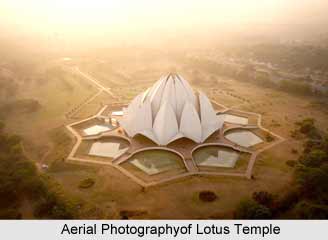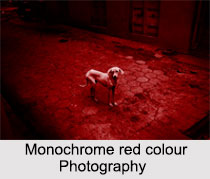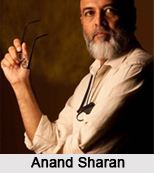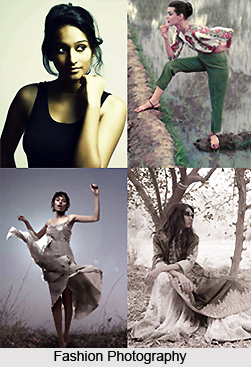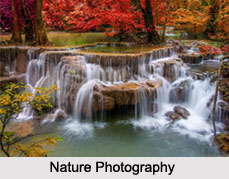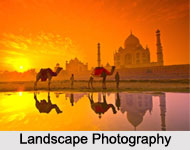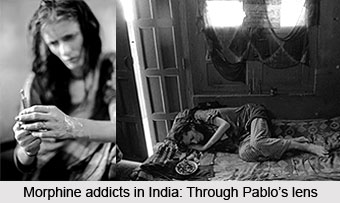 Pablo Bartholomew is an award-winning Indian photojournalist and an independent photographer based in New Delhi, India. He is noted for his photography, as an educator running photography workshops, and as manager of a software company specializing in photo database solutions and server-based digital archiving systems like Net photograph. Humility, wit and an incessant urge to transgress the mundane are qualities that define both Pablo the self and photographer. Not only do his pictures have a deep sense of familiar intimacy, but also a nuanced understanding of the lives within the frame, an insider`s view and a celebration of the humdrum.
Pablo Bartholomew is an award-winning Indian photojournalist and an independent photographer based in New Delhi, India. He is noted for his photography, as an educator running photography workshops, and as manager of a software company specializing in photo database solutions and server-based digital archiving systems like Net photograph. Humility, wit and an incessant urge to transgress the mundane are qualities that define both Pablo the self and photographer. Not only do his pictures have a deep sense of familiar intimacy, but also a nuanced understanding of the lives within the frame, an insider`s view and a celebration of the humdrum.
Always been known as one of the finest photojournalists in the country; an accredited tiara though that he wears with some disquiet embarrassment, mainly because he does not actively practise the genre anymore. His life is one about the air gone mad and helpless straws. Pablo Bartholomew tries to explore the essence of a photograph and its role as a repository of memory where he intends to "map the complete body of work, sift through it and understand what was done", keeping it from becoming mere indulgent nostalgia.
Early Life of Pablo Bartholomew
Born to a Burmese father and a Bengali/Punjabi mother on December 18, 1955 in New Delhi, India and marked by his name and ethnicity, Bartholomew`s outsider status was further entrenched by his removed and aesthetically inclined upbringing. From an early age, the photographer went beyond documentary practices and a photojournalistic approach, trying to capture moments from his youth and living a life that he even today describes as an `outsider`, grappling with his surroundings. His own roots: father who fled his country during the Second World War and came to Assam and eventually settled in Delhi, and a half Punjabi, half Bengali mother did help him relate to the world that goes unnoticed. The surroundings of art and literature, which gave him company while growing up, further nurtured his interest there.
There can be several routes to rediscovery, but Pablo Bartholomew has opted to rummage through the past. And, well, he has the material for it. The veteran lens man has been shooting ever since he was a young boy. First he shot for himself. He trained his lens on the marginalised, be it a lesser known community like the Nagas, the dark world of morphine addicts (for which he got the World Press Photo Award in 1975), or cities and Indian emigrants. And then he documented the happenings, working for reputed agencies, with his work being featured in several national and international magazines. The iconic image of a half-buried child taken during the Bhopal gas tragedy in 1984 was just one such assignment. The image went on to fetch the coveted prize of the World Press Photo of the year.
Career of Pablo Bartholomew
As a photojournalist, he documented societies in conflict and transition for over 20 years. His work has been featured in magazines like New York Times, Time, Life, Newsweek, Business Week, National Geographic, Geo, Der Spiegel, Figaro Magazine, Paris Match, The Telegraph and the Sunday Times magazine, Guardian and Observer Magazines. Visual Remnants of an Experience is what his forte thrives to be. From his early documentation of morphine addicts that won him the World Press Photo award at 19, to his current work that portrays the lives of Indians living abroad, Bartholomew`s work includes several genres and milestones. The binding factor that defines all his photographs, though, is a sense of warmth, intimacy and most of all, life. Pablo talks fondly about a picture from his Bombay series, "I never wanted to simply document the city. These photos are a collection of my experiences, of the life I have led and the stories I have in my bag."
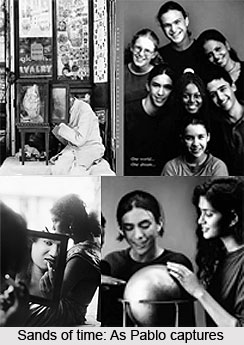 The Calcutta Diaries: Contribution of Pablo Bartholomew
The Calcutta Diaries: Contribution of Pablo Bartholomew
The Calcutta Diaries concludes a series by Bartholomew that included Outside In: A Tale of Three Cities and Bombay: Chronicles of a Past Life. Each was about the photographer`s need to explore and reclaim and highlighted Bartholomew`s own feeling of being an outsider. The sfumato effect of Bartholomew`s black and white photographs comes from shooting in natural light, inside homes, under weak bulbs, or in dusky exteriors and under dim streetlights. It comes from working with cheaper film pushed to the limit; from a tonal range devised in his father Richard Bartholomew`s home-made darkroom. Adjusting technical means to aesthetic ends, he seems to privilege a sedimented image that denotes becoming, as it does mortality. In the cycle of life and death so readily acted out by the young, what remains tantalizing is the lightness with which the existential burden of death is nurtured, coddled, tossed and relayed.
These early photographs are at the core of Bartholomew`s other `outsider` images taken in the years between 1972 and 1982. His reach expands from gentle dereliction to harsher realities: "a grim portrayal of a junky friend, a Danish woman", shooting up in one of central Delhi`s opium dens where he himself hung out after school; eunuchs in the neighbourhood and, in Bombay a little later, film extras, prostitutes, rag pickers and, at the end of the road, human leftovers abandoned to the metropolitan street.
He continued with self-assigned projects, including a fine series on Chinese working-class migrants in Tangra (Kolkata) that confirmed his affinities beyond the self-exiled to marginalized communities and classes. These are, of course, classical genres of photography - the socially erased figure being integral to, almost immanent in, the camera`s eye. If in Bartholomew`s oeuvre this body of work claims a special place, it is because it is part of his teenage self-making: seen in conjunction with his images of love and friendship, it acquires a keen vulnerability. It is special because he was among the earliest Indian Photographers to realize and expose social circumstances within an existential continuum - as figures of abjection, alienation, intransigence and struggle. And they are also, in a more generic reading of human suffering, precursors to his subsequent career of international Photojournalism, tracking natural disasters and political conflict across the globe: always on the road, fast on the draw and supplying dire images formatted for a story-cum-photo-essay to the avid world of news magazines.
The 70s are frozen in to gorgeous, smoke-ridden life in these photographs. His world is made up of heavy-lidded women who puff on joints and scrawny men who dance wearing bell bottoms and argue about vaguely-leftist ideology. It`s tough to believe these outstanding photographs are taken by a kid playing around with his camera. "Pooh and Pablo" is not the best picture in this set - he has some absolute gems here - but it`s sensual, fuzzy with playful arousal and so intimate that you can almost taste the kiss just standing in front of the photograph.
He is the man whose mind shifts between two plots, or two settings, just like his Photography that shifts between his personal and photojournalistic images.
He himself observes: "I enjoy travelling through eras. It is like looking at an old family album and seeing visuals you relate to, recalling precious memories. In fact, in another exhibition, I displayed my work along with my father`s photographs, trying to build associations that transcend the years.





